Rebuilding a tr3 transmission and second gear, my experience with tr3 transmissions and second gear is testy. They seem to want to pop out of second gear. I have heard the popping out of second gear problem when going downhill, mostly, is because the shifter ball is too loose on the second gear shifting rod. I tighten the ball real snug and the only difference I felt was the trans shifted harder and still keep falling out of gear. I have had that transmission in the same car for twenty-five years, and just live with the popping out of second going down. I have had other transmissions do the same thing and basically fall out of second gear when they want to.
One guy told me it was the dog teeth on second gear were wore out. I guess he meant the smaller teeth that come into contact with the brass synchronizer ring, but I do not know, and I am very curious how to fix the popping out of second on this rebuild. So please advise
The way I see it and from what I have read and referring to John on this one that the brass synchronizer ring needs to fit very snug on the tapered surface of the gear so that it drags some (I guess) and then when the gear becomes engaged in the shifting process the drag helps slow things down for a moment and lets the teeth mess during the shift? Maybe, I am still trying to understand.
Next it seems to me that the first gear slider with the 3 little balls and springs would hold second gear from falling out, also. The snug fit on the synchronizer with second gear should help too, and it looks like the teeth on top of synchronizer might help hold second gear in place likewise. But, not sure!
Anyways I have been picking through a collection of gears and bushings to find the best parts for this transmission rebuild, and found the same old problem with respect to aftermarket parts. In short, what aftermarket parts are worth using as opposed to original parts that look good? The stock Hoffmann main bearings M12K V3 do not seem to be available and the aftermarket main bearings cost 27.00 and I do not know if they will last. TRF sells a main bearing for 119.00 that is a higher quality than their aftermarket that costs 34.00, but that is it ---everything else is aftermarket. In addition, I have a bunch of old needle bearing that look good or should I purchase the aftermarket needle bearings for 15.00 and trust them. I honestly do not think so. I feel the best thing is to carefully pick through the needle bearing I have and use them, maybe!!!!
It is clear; I lost my mind and need a box of NOS transmission parts for Christmas.
steve
One guy told me it was the dog teeth on second gear were wore out. I guess he meant the smaller teeth that come into contact with the brass synchronizer ring, but I do not know, and I am very curious how to fix the popping out of second on this rebuild. So please advise
The way I see it and from what I have read and referring to John on this one that the brass synchronizer ring needs to fit very snug on the tapered surface of the gear so that it drags some (I guess) and then when the gear becomes engaged in the shifting process the drag helps slow things down for a moment and lets the teeth mess during the shift? Maybe, I am still trying to understand.
Next it seems to me that the first gear slider with the 3 little balls and springs would hold second gear from falling out, also. The snug fit on the synchronizer with second gear should help too, and it looks like the teeth on top of synchronizer might help hold second gear in place likewise. But, not sure!
Anyways I have been picking through a collection of gears and bushings to find the best parts for this transmission rebuild, and found the same old problem with respect to aftermarket parts. In short, what aftermarket parts are worth using as opposed to original parts that look good? The stock Hoffmann main bearings M12K V3 do not seem to be available and the aftermarket main bearings cost 27.00 and I do not know if they will last. TRF sells a main bearing for 119.00 that is a higher quality than their aftermarket that costs 34.00, but that is it ---everything else is aftermarket. In addition, I have a bunch of old needle bearing that look good or should I purchase the aftermarket needle bearings for 15.00 and trust them. I honestly do not think so. I feel the best thing is to carefully pick through the needle bearing I have and use them, maybe!!!!
It is clear; I lost my mind and need a box of NOS transmission parts for Christmas.
steve

 Hey there Guest!
Hey there Guest!
 smilie in place of the real @
smilie in place of the real @
 Pretty Please - add it to our Events forum(s) and add to the calendar! >>
Pretty Please - add it to our Events forum(s) and add to the calendar! >> 
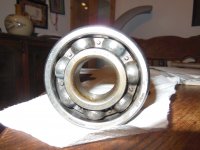
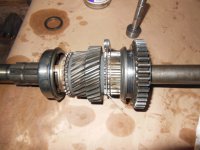
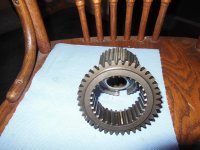
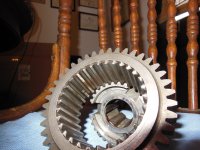
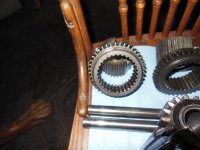
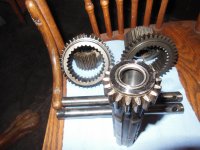
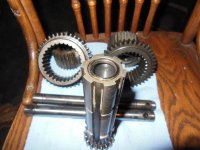
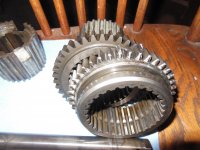


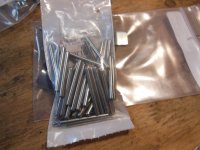
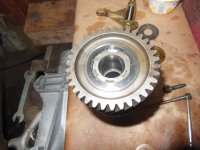
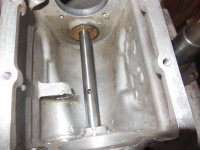
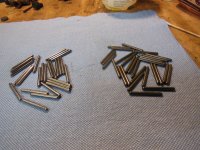
 A friendly reminder - be careful what links you click on here. If a link is posted by someone you don't know, or the URL looks fishy, DON'T CLICK. Spammers sometimes post links that lead to sites that can infect your computer, so be mindful what you click.
A friendly reminder - be careful what links you click on here. If a link is posted by someone you don't know, or the URL looks fishy, DON'T CLICK. Spammers sometimes post links that lead to sites that can infect your computer, so be mindful what you click.